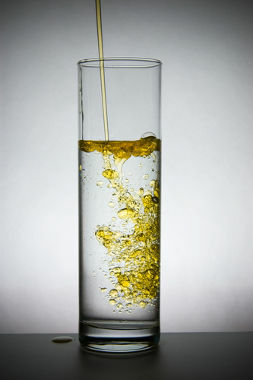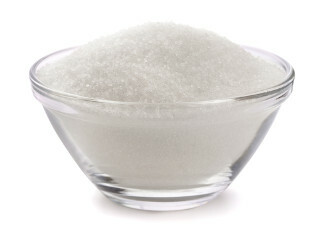Make a Mix it is an extremely routine procedure in our lives. Sure enough, we've all done one or several. Want to see an example? The daily “rice and beans” or, who knows, mayonnaise and ketchup in a sandwich. But do you know the definition of blending?
THE Mix it is simply the union of two or more different substances. According to the Aurélio Dictionary of the Portuguese Language, union means joining, adhesion or contact.
Every time a material comes into contact with another, we will have the formation of a mixture. Many people are in the habit of saying that a mixture only happens when one of the materials involved dissolves (as is the case with salt in water) and that water and oil do not mix because the oil does not dissolve in the water. As a mixture is the union of two or more materials and the water is in contact with the oil (joined), water and oil do form a mixture, even if there is no dissolution.

As water and oil are together in the same container, they form a mixture
in short: Any material mixes with any other material, regardless of whether it dissolves or not. Since everything mixes, what we have to know is how the mixes are classified, that is, their classification into homogeneous or heterogeneous.
⇒ Homogeneous mixture:
It is the mixture that has only a single phase. We form a homogeneous mixture every time all the materials involved in the mixture are dissolved. For example, if we add salt and sugar to water, both will be dissolved and, in the end, we will only see water, that is, there will only be one phase. See some examples of homogeneous mixtures:
Petroleum;
18 carat gold;
bronze;
steel;
atmospheric air;
ethanol fuel;
Gasoline.
Observation: The stage is a visual aspect. This aspect can be a different color or a different physical state. For example: the mixture of solid water (ice) with liquid alcohol has two phases.
⇒ Heterogeneous mixture:
It is the mixture that has two or more phases. It is always formed when one or more materials that have been added have not dissolved into another. For example, if we add sand and Styrofoam to water, neither will dissolve. As we can clearly see in the mixture of water, sand and Styrofoam, we have three phases. See some examples of heterogeneous mixtures:
granite;
milk;
blood;
water and sand;
water and oil;
water and styrofoam;
oil and salt.

Blood is an example of a heterogeneous mixture
By Me. Diogo Lopes Dias


